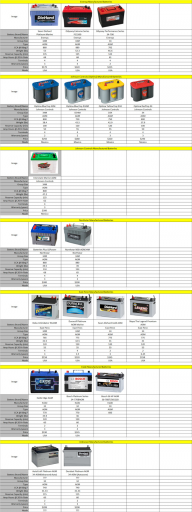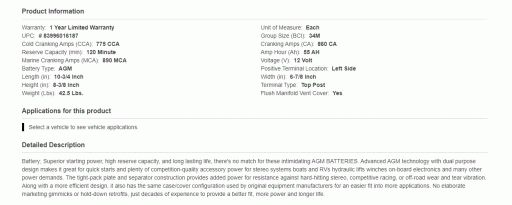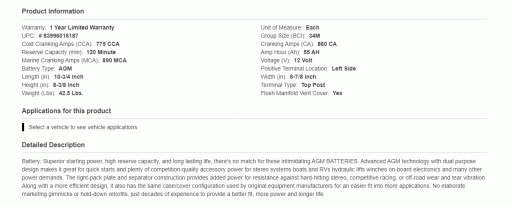I am looking to add a fridge to my 17" JKUR and have embarked on doing some research regarding batteries.
I know dual set up would be the solution, however my trips do not involve me being stationary for more than an overnight period so basically I'm looking to upgrade my main battery to be able to better deal with the having the fride hooked up to it over night. During the day I am out on the trails and I also do have a jump start power bank ready in case I get stranded with a dead battery.
In my research I came across this informative chart:

The common consensus is that the Odyssey is the way to go, however looking at the specs, considering the price point; I am wondering if I could save a few bucks and go with a generic AGM Deep cycle, dual purpose marine unit.
I came across a super start unit at O'reilley with the following specs:

The specs are very close to the Odyssey one, Price $149 VS $320.
Thoughts? Have any of you run such batteries?
I know dual set up would be the solution, however my trips do not involve me being stationary for more than an overnight period so basically I'm looking to upgrade my main battery to be able to better deal with the having the fride hooked up to it over night. During the day I am out on the trails and I also do have a jump start power bank ready in case I get stranded with a dead battery.
In my research I came across this informative chart:

The common consensus is that the Odyssey is the way to go, however looking at the specs, considering the price point; I am wondering if I could save a few bucks and go with a generic AGM Deep cycle, dual purpose marine unit.
I came across a super start unit at O'reilley with the following specs:

The specs are very close to the Odyssey one, Price $149 VS $320.
Thoughts? Have any of you run such batteries?
Attachments
-
33 KB Views: 33








